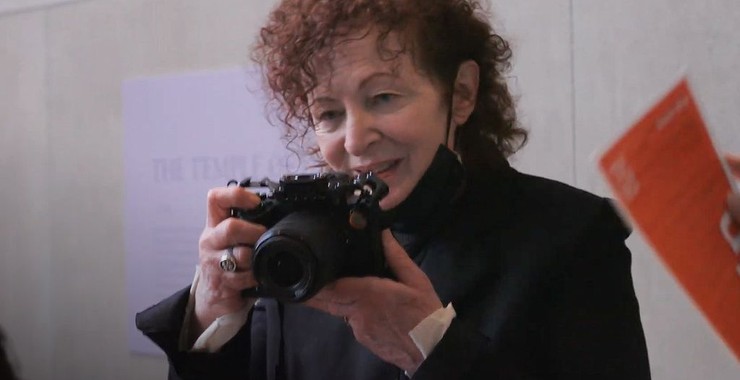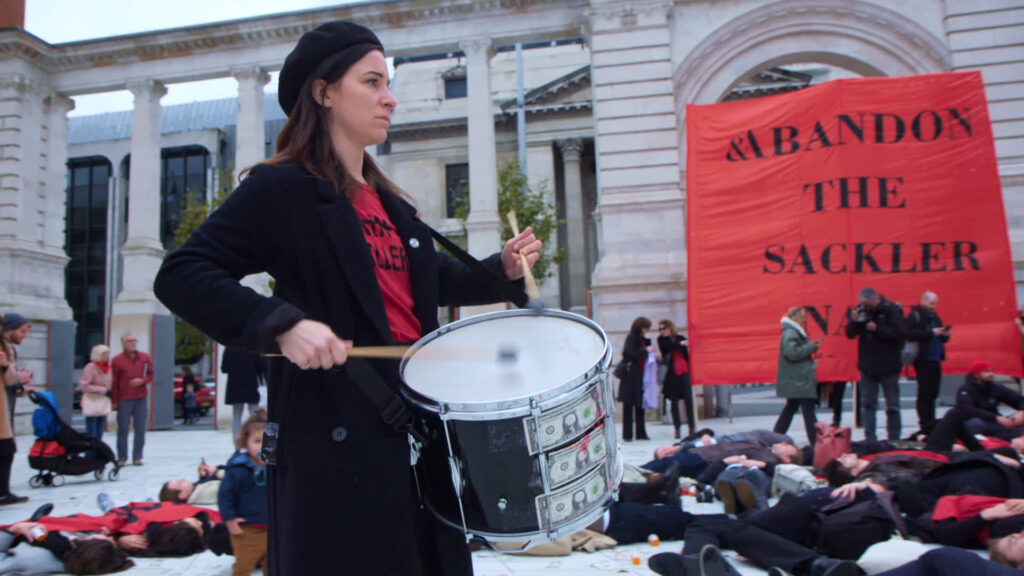
All the Beauty and the Bloodshed is a profile of photographer Nan Goldin and her leadership of Prescription Addiction Intervention Now (PAIN), the advocacy group seeking to punish the Sackler family for profiting on the addiction and overdose carnage from oxycontin. Purdue Pharma, a privately held company owned by the Sacklers, intentionally oversold oxycontin to doctors and misled the public on its addictive qualities. The saga ended up in bankruptcy court because the Sacklers drained the profits from Purdue Pharma before it could be forced to reimburse its victims.
It’s unusual to have a public controversy so without nuance – the Sacklers are clearly bad people who acted badly and irreparably injured thousands of others. As a result, we aren’t bothered when Nan Goldin, an addict in recovery herself, evenly says, “It’s personal. I hate these people.”
Up against a malevolent, heavily-resourced corporation, PAIN inflicted pain on the Sackler family by turning their own philanthropy against them, shaming major art museums into refusing gifts from the Sacklers and even removing the Sackler name from the buildings and galleries they had sponsored. The museums were the institutions with the very highest profiles: the Guggenheim, Metropolitan Museum of Art, [British] National Portrait Gallery and even the Louvre. To make things even more uncomfortable for the museums, Goldin’s own work is in the permanent collections of some of these museums.

PAIN’s actions were themselves works of performance art, often involving PAIN members feigning death en masse, surrounded by prescription bottle. To reflect Richard Sackler’s self-damning email that greedily rejoiced at the “blizzard of prescriptions”, PAIN members created a confetti blizzard of prescription slips in a major museum atrium.
The beginning and end of All the Beauty and the Bloodshed, about a third of the film, follows Goldin and PAIN’s campaign against the Sacklers. The rest of the film is the self-narrated life story of Nan Goldin, much of it illustrated by slide shows of her photos. Goldin became a key figure of the New York avant garde of the 70s, 80s and 90s, and she has led a colorful and oft turbulent life. There’s a major focus on the story of her older sister Barbara, and how the two reacted to their family by rebelling against conformity.
The bottom line is that I found the shaming of the Sacklers much more engaging that the Nan and Barbara Goldin story.
In the highlight of All the Beauty and the Bloodshed, the Sacklers on Purdue Pharma’s corporate board must themselves sit for two hours and listen via Zoom to the testimony of their victims, including one harrowing 911 call.
All the Beauty and the Bloodshed was directed by noted documentarian Laura Poitras, Oscar winner for Citizenfour. The film has been included in various critics’ top ten lists and is a contender for the Best Documentary Oscar. It’s good, but I’ve seen better docs this year.
